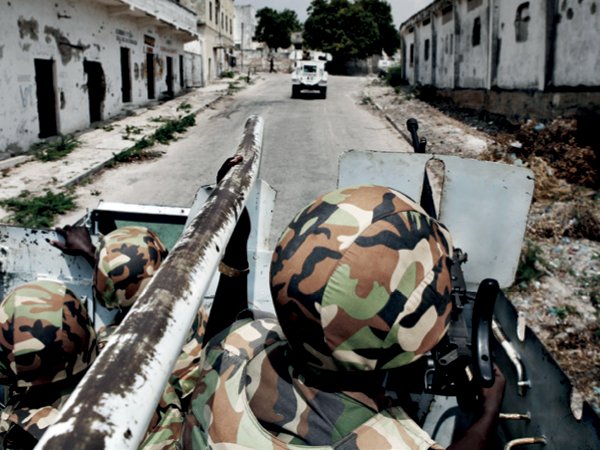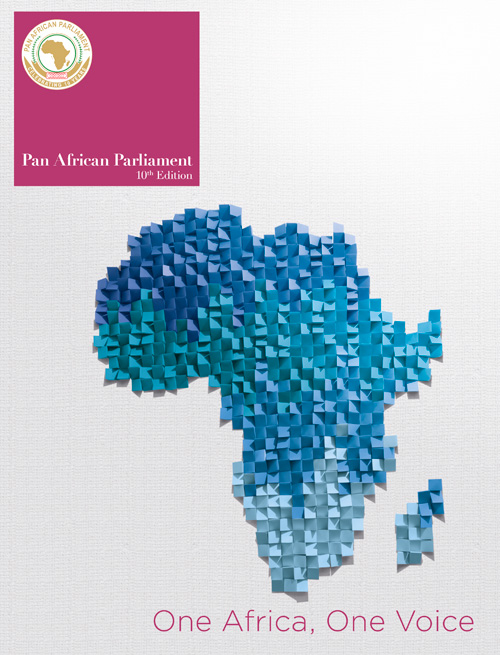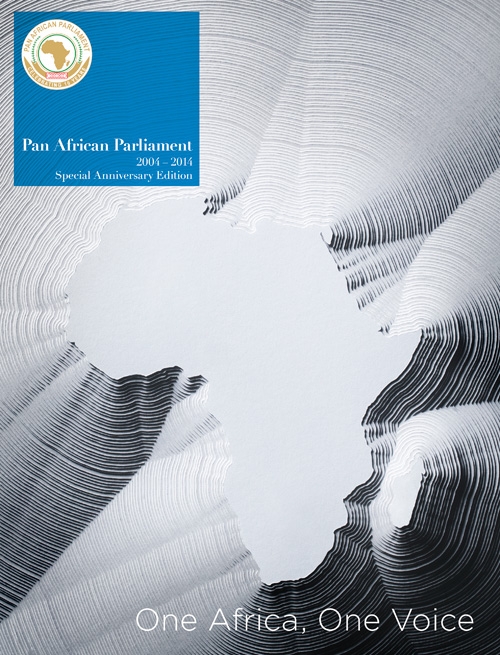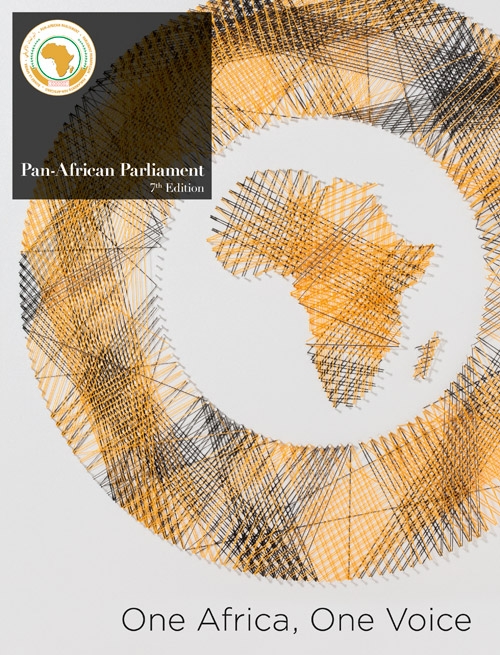
Within Africa there remains many areas where violent conflict is a regular occurrence. These reports are based on information received from the African Union Department for Peace and Security and the Institute for Security Studies (ISS) on issues of peace and security in Africa.
FIRST ORDINARY SESSION 6–17 MAY, 2013
Republic of Mali
The crisis in Mali saw significant developments after January 2013, in particular, after France’s military intervention – code name Operation Serval. For nine months Mali had endured occupation by rebel forces and armed groups professing religious extremism. Both groups had endangered the existence of the state in the northern region. In the south, Mali was plagued by divergences between political and military leaders.
The launch of Operation Serval halted the progress of Islamists towards the south of the country. Until that point, the Malian army was far from fully operational.
The offensive of the armed groups, French interaction and the arrival of the African-led International Support Mission to Mali (AFISMA) resulted in a repositioning and redefining of Mali’s political and military spheres.
The UN Security Council’s resolution 2 100 authorised the creation of a peace-keeping force, the UN Multidimensional Integrated Stablisation Mission in Mali (MINUSMA). Comprising 12 600 peacekeepers, it took over from AFISMA and was responsible for stabilising the north. While this decision addressed the security of the region, it did not solve the problem of jihadist groups that continued to threaten the stability of Mali.
Finally, it was noted that the Malian security crisis had served as an opportunity for certain groups to seek revenge, so a comprehensive process of national reconciliation was of paramount importance.
Central African Republic
The Central African Republic’s (CAR) political history has been one of abortive attempts at democracy and violence caused by civil wars and coups d’état. Since independence, the CAR’s leaders have shown that arms were the sole mode of accessions. The latest rebellion by a group of armed gangs under the banner of Séléka are the result of the failure to restore peace since 1990.
The chronic instability in the CAR can be attributed to the culture of military rebellion; lack of good governance; deterioration of the socio-economic situation and the decline of the national army. When armed factions threatened the capital Bangui in December 2012, the Séléka rebels agreed to negotiate with President François Bozizé, resulting in an agreement signed under the auspices of the Economic Community of Central African States (ECCAS) in Libreville in January 2013.
It detailed a plan for power sharing but in less than two weeks, the agreement looked shaky and Séléka took up arms in the east of the CAR. What followed was the creation of a National Transitional Council (NTC) with a new transitional president. Once again, the CAR had a government transition that didn’t abide by a constitutional framework.
At the ECCAS summit in April, four decisions were taken: the summit did not recognise the NTC-elected president; the transitional phase was fixed at 18 months; the summit consolidated the powers of Prime Minister Nicolas Tiangaye; and it proposed the re-enforcement of peacekeeping forces to cope with rising insecurity.
Finally, the committee noted that major obstacles faced by the country were lack of financing (brought about by the crisis) and donors’ decision to suspend aid.
DRC
In March 2012, both the M23 violent rebellion in eastern DRC and the political situation in Kinshasa drew the international community’s attention.
The International Conference on the Great Lakes Region (ICGLR) started a mediation process between M23 and the Kinshasa government.
The ICGLR proposed a Neutral International Force (NIF) be deployed to neutralise negative forces in eastern DRC.
From the start, however, the NIF was problematic. Funding was part of the challenge but ensuring neutrality was even more so, especially as most of the countries in the area had a history of DRC involvement.
Finally, the UN stepped in, offering to fund the Force Intervention Brigade (FIB) of South African, Malawian and Tanzanian soldiers. The FIB would function as part of the UN’s Stablisation Mission in the DRC, but it would be mandated to target operations against M23 and other local rebel groups.
In February 2013, the Peace, Security and Co-operation Framework Agreement on the DRC was signed by 11 countries in Addis Ababa. The agreement was aimed at reforms within Kinshasa’s domestic politics, and urged neighbouring countries to stop interfering in the DRC.
M23 opposed the agreement, as they believed it would threaten their military position and the opportunity to enrich themselves in the Kivus.
The four-day terrorist attack of the Westgate Shopping Mall in September 2013, where 67 people were killed and a further 23 went missing, grabbed the world’s attention
They also highlighted the long-standing issue of Congolese refugees stuck in Rwanda. Finally, M23 promised to fight to the last man should the FIB attack them before ICGLR negotiations are concluded.
With the deployment of the FIB and its aggressive peacekeeping mandate, and the surrender of rebel leader Bosco Ntaganda, the peace and security situation in the DRC may improve but only time will tell.
Somalia
There was notable peace and security progress in Somalia after the new government came into power in September 2012. The most visible political achievement was the swearing-in of the Prime Minister Abdi Farah Shirdon Saaid and his Cabinet. There was also extended security beyond Mogadishu and battles were won by the African Union Mission in Somalia and its allies.
However, Al-Shabaab with its guerilla-style tactics, remained the primary threat to the country’s peace.
Ethiopia warned it would start withdrawing its troops from Somalia soon, raising concern as Al-Shabaab was known to closely monitor movement in the area.
Previously when troops withdrew from Huddur, Al-Shabaab fighters quickly took over. To encourage the development of a strong Somalian army, the UN Security Council eased the arms embargo amid concerns that this may be abused and affect the security situation.
Tensions remain high around the proposed formation of a Jubaland state, made up of the Gedo, Middle Juba and Lower Juba regions. Kenya and Ethiopia both championed this as Kenya believed it would be a buffer zone to help prevent Al-Shabaab incursions, while Ethiopia wanted to strengthen its borders. However, one of the major stumbling blocks was that the region comprised many different clans, and reconciling them would prove incredibly difficult.
SECOND ORDINARY SESSION 21 OCT–1 NOV, 2013
Republic of Mali
On 28 July, Mali held its presidential elections and Ibrahim Boubacar Keïta won 76.5% of the votes. He was inaugurated on 20 September 2013. However, the new president’s path was fraught with challenges, including: restoring national reconciliation and security; the fight against radicalism and extremism; the credibility of the political leadership; and the socio-economic development of Mali.
Key to all of the above was establishing effective state institutions that would regain trust and confidence. President Keïta’s major asset for both his election victory and the future is that he creates a level of integrity.
Guinea, Conakry
Guinea has battled through a series of crises over the past seven years. After decades of military dictatorship, national protests led to a political transition in 2007/8. But in 2008, after a military coup, Captain Dadis Camara plunged the country into crisis, which led to gross human rights violations and a crackdown on political freedom. Camara’s reign ended when he was shot in 2009. Civilian rule returned with the election of Alpha Conde in 2010.
The country was in a cycle of instability for three years after the failure of the government and the opposition over legislative elections. Since 2008, the state had been functioning under the National Transition Council.
In May 2013, a facilitation team was established to bring the parties together. From this, the election date was set for 24 September 2013. Tensions remained and the election was postponed until 28 September as clashes between the government and opposition supporters left several dead and scores injured.
When the election finally took place, it was largely peaceful with an estimated 80% turnout. However, the opposition accused the government of rigging the election and on 8 October, ECOWAS, the EU, the UN, France and the US all expressed their concerns about election irregularities. Three weeks after the vote, and at the time of writing the report, the full results of the election had not been published.
Kenya
The May 2013 elections were peaceful, mired only by legal issues surrounding the credibility of the outcome and the charges that President Uhuru Kenyatta and his deputy William Ruto faced at the International Criminal Court (ICC). There were divided sympathies for the two leaders. Pro-government politicians supported a deferral of the trial, set for November 2013, or even leaving the ICC. Opposition groups, on the other hand, believed that Kenya had a duty to respect international obligations.
The issue escalated to an summit of the AU in October, which addressed the relationship between Africa and the ICC. The resolutions were: to establish a Contact Group of the Executive Council that would consult with the UN Security Council (UNSC) before President Kenyatta’s ICC trail; and for Kenya to send a letter to the UNSC requesting a deferral, backed by all African states.
The four-day terrorist attack of the Westgate Shopping Mall in September 2013, where 67 people were killed and 23 went missing, grabbed the world’s attention. While the attack raised the issue of Kenya’s security situation, it also highlighted the country’s disorganised response to an attack. Of note, though, was that the incident proved the regionalisation of Al-Shabaab’s threat in the area. The primary motivation of the attacks (according to Al-Shabaab) was for Kenya to pull out from Somalia.
DRC
Energies in the DRC were focused on the war in the east – in particular the stand-off with M23 – and tense relations with Rwanda.
The concentration on M23 was due to its military strength, rather than popular support. The group had attempted to capitalise on discontent with the Kabila government but this has not been taken seriously by local citizens.
The aforementioned ICGLR talks continued in fits and starts, and after an extraordinary summit was held in September, the decision, once again, was that M23 and the Congolese government resume negotiations in Kampala. The deadline for talks was missed as neither group could agree on amnesty for key M23 fighters. In addition, both sides had violated ceasefires.
The relationship between the DRC and Rwanda had not improved, and the ICGLR remained the main body for facilitating exchange. However, for the first time, the UN and US both condemned Rwanda’s involvement in the DRC as it supported M23 with troops and weapons.
The decision was that M23 and the Congolese government resume negotiations
The Peace, Security and Co-operation Framework Agreement signed in Addis Ababa in 2012 remained the operative process aimed at stabilising the region. The key aspects of the agreement were that signatories had to refrain from interfering in regional states’ internal affairs and that the Congolese government would commit to enhancing democracy. However, this agreement did not have a reinforcement or oversight mechanism.
A national dialogue was held by President Joseph Kabila from 7 September to 23 October, after which he announced that a National Unity Government would be put in place. This was in response to the 679 resolutions that the dialogue resulted in. It was also decided that a national committee would be tasked with monitoring the materialisation of the resolutions.
Madagascar
The issue of election candidates’ legitimacy had embroiled Madagascar in a political crisis since 2009. Although the country had signed the SADC roadmap in 2011, it was only in late August 2013 that the disputed nominees could stand for election.
However, on 25 September – the day after election campaigning started – a bomb was detonated outside Madagascar’s Special Electoral Court.
The Independent National Electoral Commission for the Transition has been tasked to manage the planned elections in a peaceful and transparent manner. At the time of this report, the elections were slated for 25 October 2013.
Somalia
President Hassan Sheikh Mohamud’s government continued to register progress and increased inter-national support.
The Jubaland crisis remained an important security issue but in June 2013, after heavy fighting, the Inter-governmental Authority on Development initiated a dialogue process between the main stakeholders. This resulted in: an interim administration for the Gedo/Lower Juba/Middle Juba regions subject to due constitutional process; the Kismayo seaport and airport management would be handed to the Federal Government of Somalia (FGS) after six months; and the Ras Kamboni Brigade and other militia were to be integrated into the Somali National Army.
The agreement calmed tensions, but it remains to be seen how the agreement will be implemented. An example of how these implementations could be difficult is that Puntland, after announcing it could not adhere to many aspects of the agreement, decided to suspend co-operative relations with the FGS.
The other great threat to the area to date had been Al-Shabaab, but after a raft of assassinations, desertions and internal strife, the power structure of the group was radically altered, with most of the control now in the hands of Ahmed Abdi Godane.
In September 2013, 50 high-level international delegations met in Brussels to discuss the New Deal Compact for easing Somalia out of fragility over the next three years. Two key outcomes were the adoption of the New Deal Compact document that detailed what needed to be done to achieve the delegation’s goals, and secondly, the provision for a High Level Partnership Forum as the main oversight body. Donors at the meeting pledged a total of US$2.2 billion.
However, it may be difficult for various reasons for countries to honour their pledges and even if they do, Somalia lacks the institutional capacity to effectively utilise the donations.








